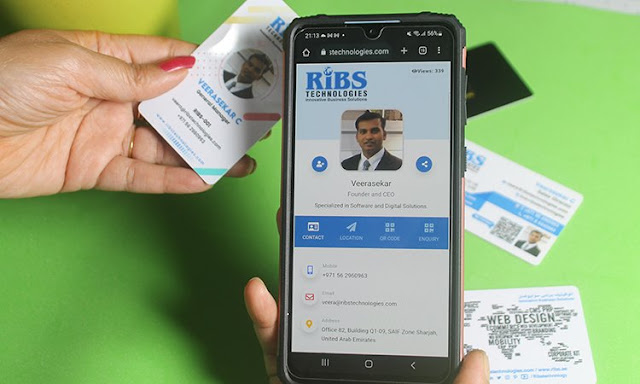The Anatomy of an Effective NFC Business Card: Design and Tech Tips
In the digital age, the traditional paper business card is fast becoming obsolete, replaced by its high-tech counterpart: the NFC business card. NFC, which stands for Near Field Communication, allows for the wireless transfer of data over short distances. With just a simple tap, the NFC business card can share a plethora of information, making networking efficient and hassle-free. But how do you design an NFC business card that stands out? Let's dive into the anatomy of an effective one.
Aesthetic Appeal and Brand Identity
Just like traditional cards, the NFC business card serves as
a representation of you and your brand.
- Material
& Finish: Opt for a high-quality material that feels good in the
hand, whether that's a particular type of plastic, metal, or even an eco-friendly option. The finish can range from glossy to matte, depending
on your brand's aesthetics.
- Design:
It's essential to ensure your logo, colors, and design elements resonate
with your brand. Maintain consistency with your company's overall branding
for instant recognition.
Essential Information
Even in a digital era, some fundamental elements remain
crucial:
- Name
& Position: Clearly state your name and job title.
- Company
Name: Alongside your personal name, ensure the company's name is
visible.
- Contact
Details: Include a phone number, email, and company address.
Digital Integration with NFC
This is where the NFC business card truly shines,
transforming from a static object to an interactive experience.
- Digital
Portfolio/Resume: Link your NFC business card to your digital
portfolio or resume, offering potential employers or partners a detailed
look at your work.
- Social
Media & Websites: A quick tap can direct someone to your LinkedIn,
company website, or other social platforms.
- Virtual
VCard: Automate the process of adding contact details to one's
phonebook with a VCard.
User Experience (UX)
A vital aspect of any tech product is its user experience.
When someone taps your NFC business card, what happens next should be seamless.
- Mobile-Optimized
Landing Pages: Ensure that any linked page is mobile-friendly.
- Quick
Load Times: Optimize websites or digital platforms to load swiftly.
- Intuitive
Navigation: Ensure the information is organized logically.
Security and Privacy
Incorporate measures to keep the information safe:
- Encryption:
Employ standard encryption protocols to protect data shared via your NFC
business card.
- Privacy
Settings: Allow users the freedom to decide which details they want to
share and which they'd prefer to keep private.
Test and Update
Just like any digital tool, it's essential to test your NFC
business card regularly:
- Compatibility:
Ensure your NFC business card is compatible with various devices.
- Updates:
Periodically update the digital content linked to your card to keep it
relevant.
Conclusion
The NFC business card isn't just a tool for sharing contact
details; it's a representation of the modern professional. Merging design
elements with technological features ensures your card isn't just functional
but leaves a lasting impression. As you venture into the world of NFC business
cards, keep these design and tech tips in mind for a card that truly stands
out.




Comments
Post a Comment